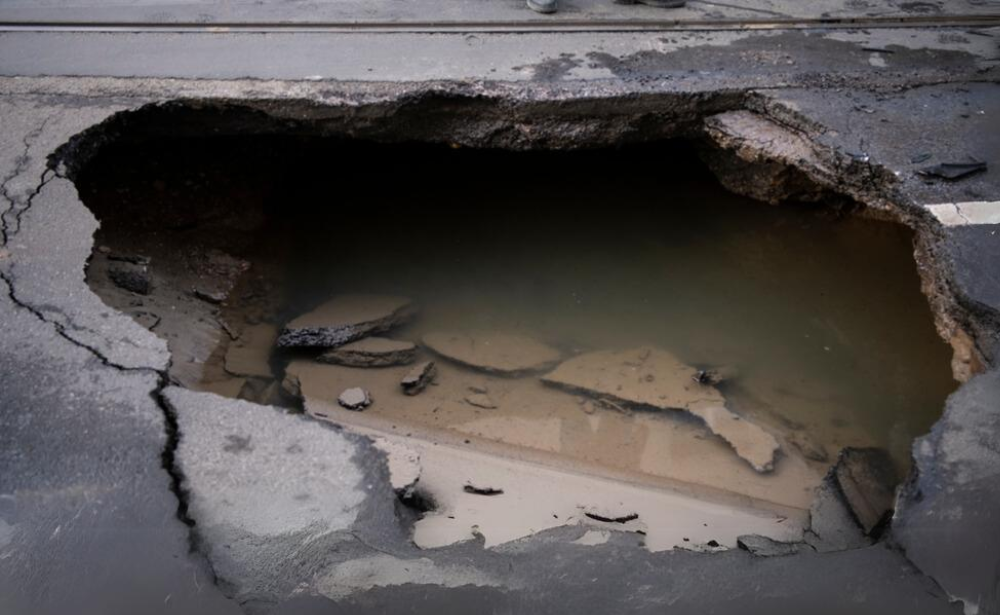导言
吉隆坡印度清真寺最近发生的天坑事件暴露了快速发展城市中城市基础设施的脆弱性。在石灰岩基岩地区,天坑继续构成重大威胁,因此了解其成因、即时应对措施和预防措施对城市安全至关重要。
城市地区水坑的成因和诱因
在吉隆坡等城市地区,天坑往往是自然和人为因素共同作用的结果。吉隆坡建在石灰岩的基础上,而石灰岩以容易被酸性地下水溶解而闻名。随着时间的推移,这一过程会产生地下空洞,最终可能坍塌,导致天坑。
此外,水在引发天坑方面的作用也不容忽视。雨水、管道泄漏和管理不善的排水系统都会造成土壤侵蚀,尤其是在前矿区,那里的地面本来就松散不稳定。钻探和挖掘等施工活动会进一步破坏地下结构的稳定性,增加坍塌的风险。水管或下水道的故障也会造成土壤侵蚀,地下水管理不善会降低地下水位,导致地面下沉。
吉隆坡的采矿历史,加上其天然石灰岩基岩,使得这座城市特别容易出现天坑。
先进的检测技术
为了防止此类事件的发生,我们可以利用先进的技术和工艺在潜在天坑出现之前对其进行探测。使用检波器进行声纳勘测,可以测量地面振动,并确定声纳波因空隙或不稳定土壤而移动较慢的区域--这表明存在潜在的天坑。此外,声波技术还能将声波穿过地面,通过分析声波的反射来确定地下结构的变化,包括可能塌陷形成天坑的空隙或薄弱区域。
据 Ir.Jeffrey Chiang Choong Luin 博士教授说:"声纳勘测和声波分析等先进技术的使用,对于在潜在天坑对公共安全构成威胁之前确定其位置至关重要。通过主动监测这些区域,我们可以防止灾难性的故障,确保城市基础设施的完整性"。
立即应对水坑
一旦发生天坑,工程师和应急人员必须迅速采取行动,确保公众安全。第一步是封闭周围区域,防止人员进入,并疏散附近人员,避免造成伤害。快速评估天坑的大小和进一步扩大的风险至关重要。此外,还必须检查附近建筑物的稳定性,并关闭煤气、水和电等公用设施服务,以防止出现更多危险。
平衡城市发展与基础设施监测
城市当局面临着平衡城市发展与维护和监测地下基础设施需求的挑战。从一开始就将基础设施维护与城市发展相结合至关重要。当局应要求在任何施工开始前提供详细的技术工程报告,以评估地下状况并确定潜在风险。定期监测和维护应该是强制性的,利用先进的技术在天坑等问题出现之前进行检测和解决。
结论
印度清真寺天坑提醒我们在城市规划和基础设施管理中采取积极措施的重要性。通过优先探测和预防天坑,吉隆坡等城市可以继续安全发展,同时保护市民和保持基础设施的完整性。

作者简介
蒋庄麟教授
马来西亚工程师学会(IEM)主席,教授(土木工程)、
世纪大学工程建筑环境与资讯科技系
Jeffrey Chiang Choong Luin教授博士是土木工程领域中的杰出人物,目前担任马来西亚工程师学会(IEM)主席,并在世纪大学工程建筑环境与资讯科技学院担任教授一职。Jeffrey Chiang博士拥有多元化而辉煌的职业生涯,为学术界与专业工程领域作出了重大的贡献。他曾在ARUP Jururunding Sdn Bhd KL担任结构工程师、SIT巴生校园高级讲师、Monash大学双威校园土木工程讲师以及UTAR吉隆坡校园副教授。他也曾担任INTI国际大学尼来校区土木工程系教授兼系主任,以及世纪大学工程与建筑环境学院前任院长。Jeffrey Chiang博士曾担任多项重要职务,包括马来西亚标准委员会(Standards Malaysia)混凝土结构设计技术委员会(Technical Committee concrete structures design EC2)主席,以及国际工程与建筑学会(IEM)地震设计技术委员会(EC8)与风荷载设计技术委员会(Wind Load Design)前任主席。他的贡献还包括担任 IEM 土木与结构工程技术分部前主席、IEM 前名誉秘书、IE 前主席、IEM 前名誉秘书、IEM 前名誉秘书、IEM 前名誉秘书、IEM 前名誉秘书、IEM 前名誉秘书、IEM 前名誉秘书、IEM 前名誉秘书。

